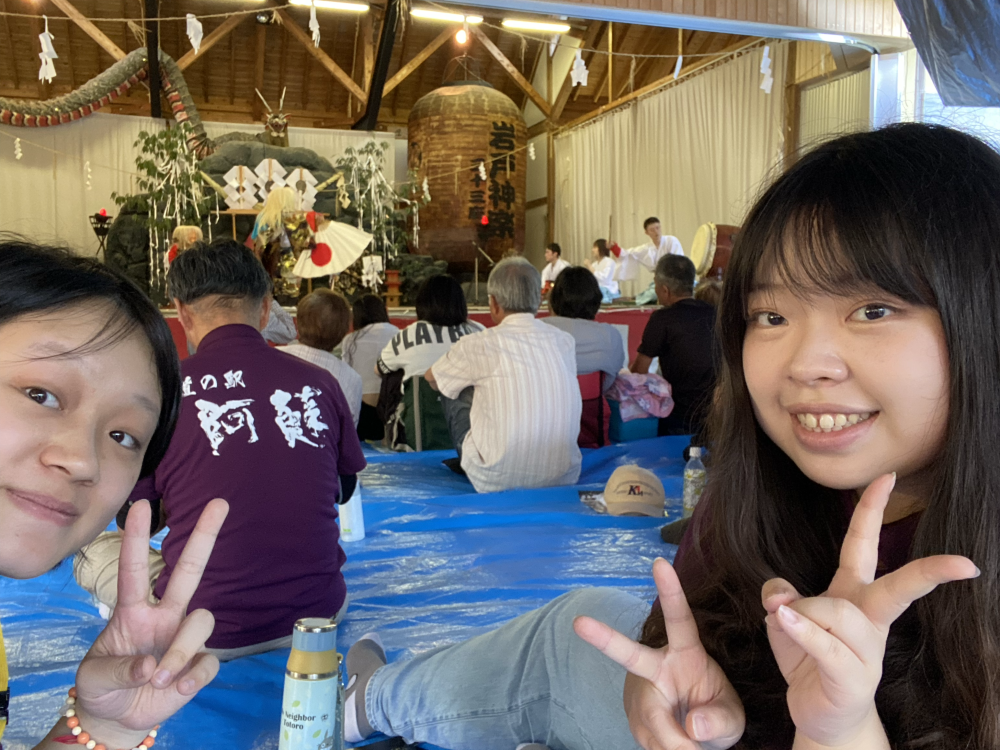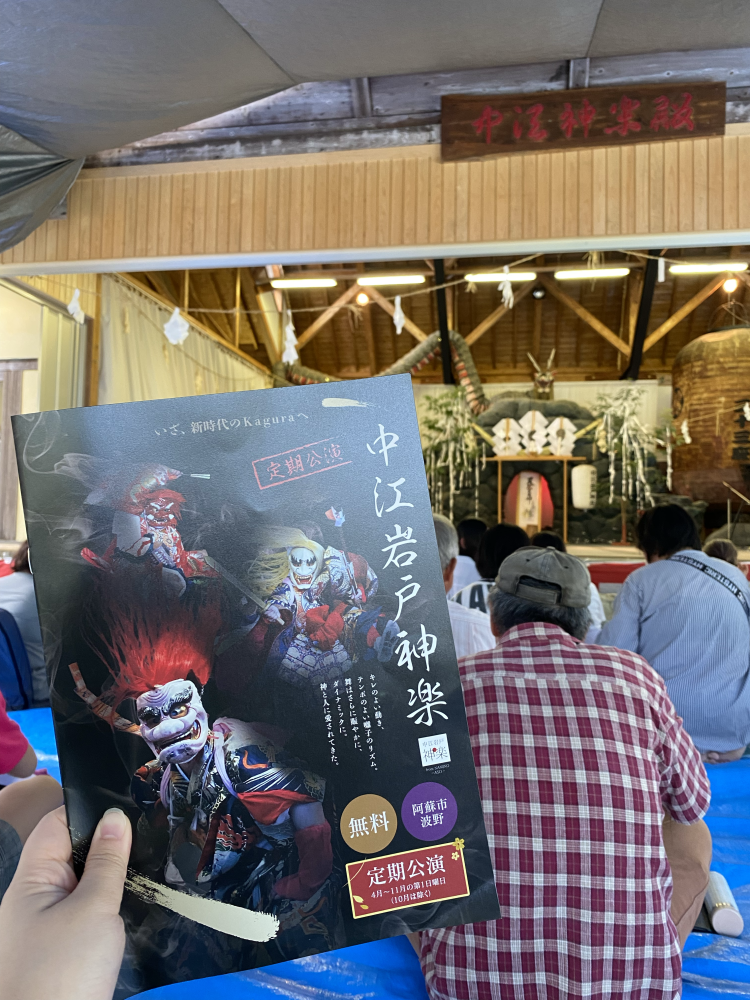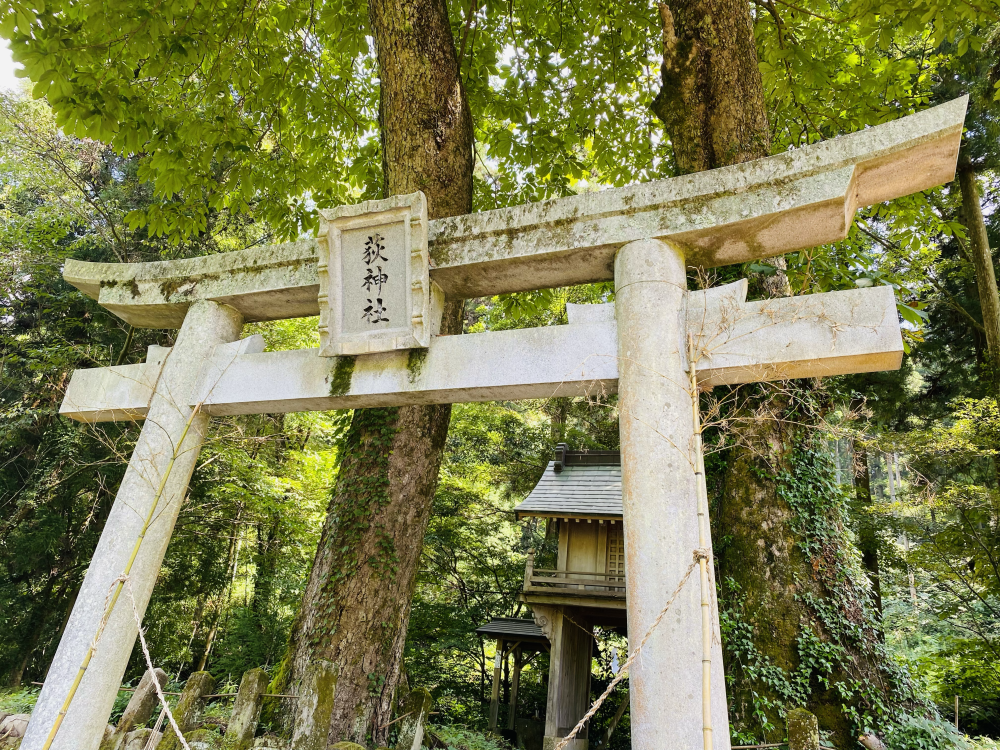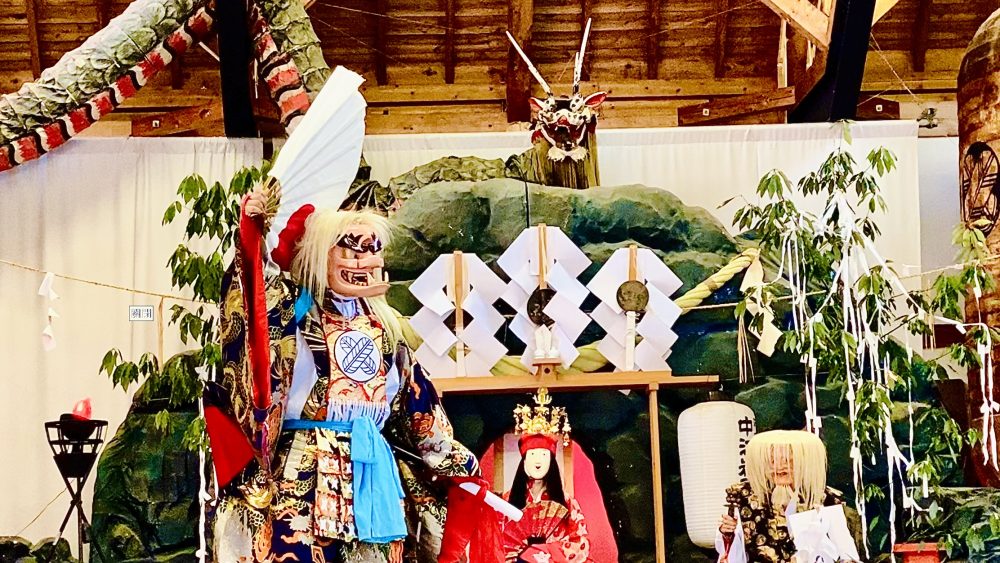Hello~ We are Minze and Totoro!
Today we want to introduce a traditional culture called ”Kagura” to you (✪ω✪)

Kagura
Kagura origins are said to trace back to the ancient world of Japanese mythology. According to the records in the Kojiki and Nihon Shoki, the sun goddess Amaterasu Omikami hid herself in the Amanoiwato (Heavenly Rock Cave) after being distressed by the violent behavior of her brother, Susanoo Omikoto.
As a result, the world was plunged into darkness. At that time, the goddess Amano Uzume Omikoto performed a joyful dance in front of the cave, which interested Amaterasu. She opened the cave slightly. Due to the dance, light return to the world. It became the origin of Kagura, a dance resembling a form of “prayer,” meant to bring light back into the world.
Even today, Kagura is performed to pray for the prevention of natural disasters and to invoke a bountiful harvest. It is a prayer for survival, symbolizing humanity’s will to live.
Nakae Iwato Kagura originated during the Edo period in the Meiwa era (around 1765), building upon the tradition of court Kagura performed in the imperial court.
It consists of 33 dance pieces (called 33 sets) and has been passed down through generations at the Ogi Shrine in the Nakae area, where the deity Takeiwa Tatsu Nomikoto, the god who opened up the land of Aso, is worshipped.
In 1975, it was designated as a National Intangible Cultural Heritage.

The moment the opening drum beats fall, you can immediately sense the performers dedication and professionalism. Dressed in traditional Shinto priest attire, with a ceremonial cloak and mask, this is the most common appearance in Kagura.
The dancers are unable to reveal their true faces; during this moment, they are no longer themselves. They dance for the gods and pray for the people, putting their all into their performance and infusing it with a sense of mission. As an audience member, one can’t help but admire their stamina and endurance.
Although the content of their songs may be difficult for me to understand, it does not affect the enjoyment of the performance.
The interaction with the audience is a major highlight. In the song “Tsuna No Haha”, a clown character playfully teases a goddess who is hanging out clothes. During the performance, the clown leaps off the stage to prank the audience, making the scene instantly humorous and engaging.
In the song “Shiba Hiki”, the deity Amanokoyane Nomikoto invites the audience to participate in a tug-of-war, giving people of all ages the chance for an immersive experience. The performance breaks away from a “serious” framework, bridging the gap between tradition and modernity, making it more approachable.
For me, one of the charms of Japan is its preservation and transmission of culture. The performance venue is located about an hour’s drive from Michi No Eki Aso.
Every dancer on stage is a young person around 20 years old. They start training from elementary school and after being selected through rigorous screening, continue their training to become the new generation of Kagura dancers.

At the beginning of the performance, you will also see performances by elementary school trainees. Their movements may be relatively immature, and they might sing the wrong lyrics, but the applause from the audience remains warm and enthusiastic. Local culture relies on the passionate efforts and responses from both sides to survive and thrive.
I was deeply moved and and had a profound feeling that can only be fully appreciated by witnessing the show firsthand. I sincerely hope you are all able to witness the world of Kagura some day. I can highly recommend it.



Thank you very much for reading and following our posts.
Minze & Totoro from Taiwan

